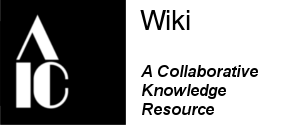Recycling
In the survey that the AIC Green Task Force conducted last year, we found recycling to be the green initiative that AIC members are most likely to participate in at work, with 87% of respondents indicating that their workplace participates in recycling. Unfortunately, the downturn in the economy led to a crash in the recycling market in the fall of 2008. With people buying less, there was less of a need for raw materials. With profits from recycling down, municipalities were forced to cut some recycling programs due to budget shortfalls. The market for scrap materials is back up, but some municipalities have not yet restored the programs they had before the downturn. [1] The energy used in a recycling process or pollution generated with some collection programs may be a concern, but there is much variability, depending on the material and the jurisdiction.
Get into the habit of asking yourself if something can be reused or recycled before you drop it into the trash can.
If you recycle nothing else, aluminum and paper are very important to recycle. The process of extracting aluminum from bauxite ore is very energy intensive, while recycling aluminum uses approximately 95% less energy (sources vary[2],[3]), but only about half of the aluminum products used each day get recycled. Aluminum can be recycled again and again without changing its properties. Most jurisdictions accept foil wrap, too. If you throw it out, then its value is gone forever and more land will have to be mined to replace it.
As conservators, we demand high standards in our paper products, and many have to be as pure as possible. Even though there are many products we cannot buy recycled, we can make sure that all the scraps of high quality fibers we use are saved for recycling. Paper fibers get damaged each time they are used, but many can be used 5-7 times. Since the fibers have already been processed, they require 40-70% less energy (sources disagree on the exact amount) and 55% less water. Paper is the largest component of solid waste, making up about 40% of the poundage in landfills. The EPA estimates that at least ¼ of this could have been recycled. [4], [5],[6] Paper products that do not need to be of high quality in our working lives, such as calendars or notepads, can be made of recycled paper.
Often cut-offs of Mylar, mat board, and ethafoam are too small to be re-used by conservators or exhibits personnel but are often hard to find a firm that will take these items for recycling. When feasible it may be possible to partner with other organizations that may be able to use some materials but still finding a local recycler who will take these materials is important.
